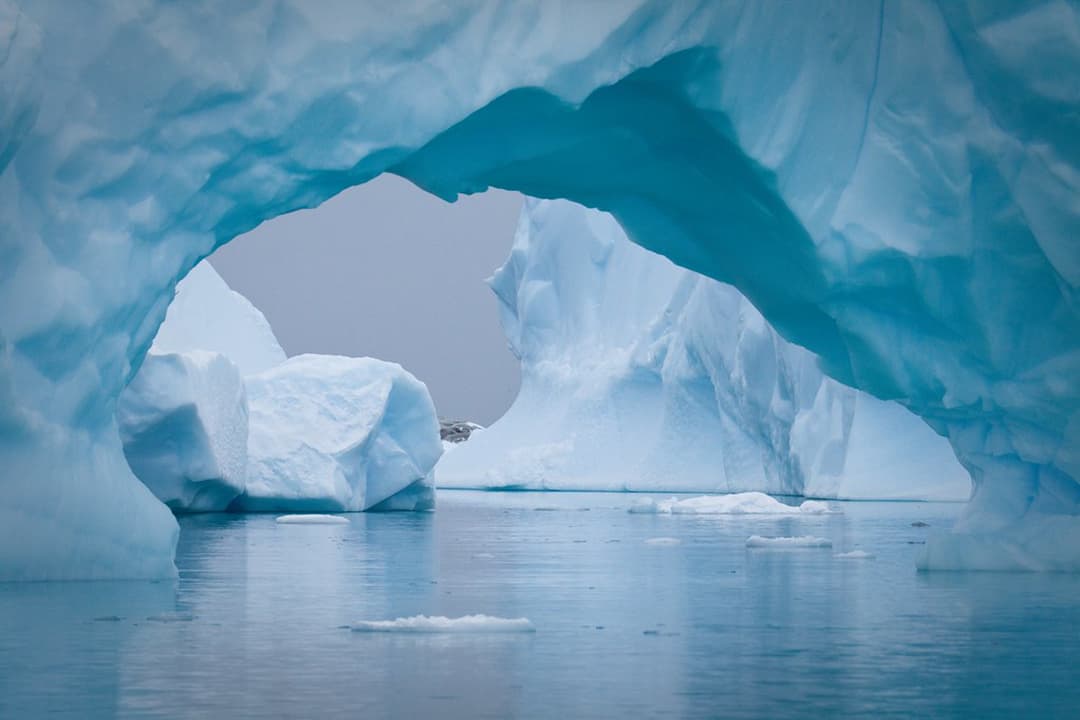Far off in the northernmost reaches of Nunavut, the coasts of Ellesmere Island and Greenland meet to form the Nares Strait, a narrow waterway connecting the Arctic Ocean to Baffin Bay and the Northern Atlantic beyond. As winter arrives, ice arches form and block passage of ice from the Arctic southward. These arches are large structures consisting of immobilized ice sheets spanning across the northern and southern inlets of the strait.
But observers have noticed that structures are forming for shorter periods of time, leaving a larger window for ice to flow out into warmer waters. A recent UTM research paper published in Nature Communications examines the observed trend and predicts dire consequences to follow.
A concerning trend
Orbiting hundreds of kilometres above the planet, the European Space Agency’s Sentinel-1 satellites watch over the ice sheets, observing day and night the flux of Arctic ice along the Nares Strait using radar mapping of the Earth’s surface.
It is through these images that Kent Moore, a professor in the Department of Chemical & Physical Sciences at UTM, was able to quantify the total ice area moving through the waterway. When ice arches form, the magnitude of this measure is low, indicating less Arctic sea ice moving to warmer waters on the other side of the strait.
The data shows a concerning trend, however. Each year, the ice arches form for shorter and shorter periods of time. At the start of the millennium, these structures could be expected to last for more than 200 days of the year. Now, they last for around 100 days.
The effects of this are clear. From 1997–2009, an annual average ice area of 42,000 square kilometres passed through the southern Lincoln Sea flux gate, located at the northern end of the Nares Strait. From 2017–2019, this average more than doubled to 86,000 square kilometres as ice arches formed for shorter periods of time or, during the winter of 2019, not at all.
The reason for this, explained Moore in an email to The Varsity, is weaker ice structure due to the climate crisis.
“The warming of the Arctic is the primary reason for the weakening of these arches but there are other factors at play such as the thinning of the sea ice,” he wrote. “Thinner ice is not as strong and hence the arches with thin sea ice are not as strong.”
Anticipating the consequences
With weaker ice arches leading to greater Arctic ice loss and increased ice loss leading to an overall thinner Arctic ice cover, the problems are only cascading. Further north of the Nares Strait, a region known as the Last Ice Area is expected to be the last remaining sanctuary for Arctic ice cover and those that depend on it in the decades to come. For Inuit populations who use the ice to travel, movement is only expected to become more difficult as the ice thins, according to Moore.
Mammals, such as seals and polar bears, prefer thick ice to travel as well. In the case of seals, a thicker cover means deeper dens to raise pups and seek shelter from predators. Without protection, populations could decline by up to 99 per cent by the end of the century, with secondary effects to follow down the food chain.
The consequences are not contained to the North Pole, either. With a more mobile ice pack, more of it could reach southern waters. There have already been instances of thick sea ice reaching the ocean off Newfoundland’s coast, Moore wrote, creating issues for marine traffic in the area.
All hope is not yet lost. If the Paris Agreement can prevent complete melting of the Arctic ice, the Last Ice Area can act as a springboard for the restoration of the ice coverage. The more that can be done to reduce our global carbon footprint, the less warming that will follow. But things will become worse before they become better, especially if drastic action is not taken.


